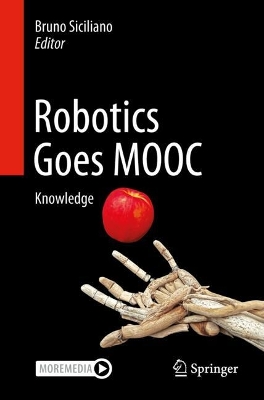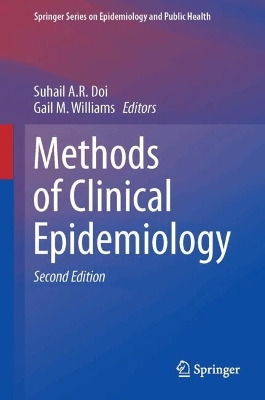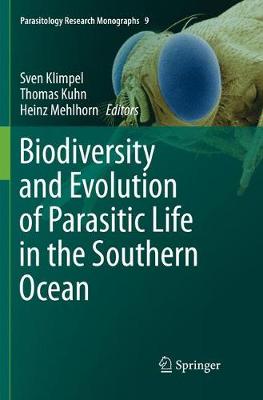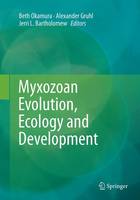Ticks of Europe and North Africa
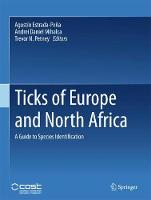 -15%
portes grátis
-15%
portes grátis
Ticks of Europe and North Africa
A Guide to Species Identification
Petney, Trevor N.; Estrada-Pena, Agustin; Mihalca, Andrei Daniel
Springer International Publishing AG
04/2018
404
Dura
Inglês
9783319637594
15 a 20 dias
Descrição não disponível.
1. An introduction on tick accepted names and nomenclature.- 2. Keys for the genera of ticks, including larvae, nymphs and adults.- 3. Keys for the genus Argas (adults and larvae).- 4. The genus Argas, including A. persicus, A. reflexus, A. vespertilionis, A. miniatus, A. polonicus, A. transgariepinus.- 5. Keys for the genus Ornithodoros (adults and larvae).- 6. The genus Ornithodoros, including the O. erraticus complex, O. maritimus, O. coniceps, O. capensis, O. alactagalis, O. lahorensis, O. tholozani. Gad Baneth and Gabriela Kleinerman.- 7. Keys for the genus Ixodes (adults, nymphs and larvae).- 8. The genus Ixodes including I. ricinus, I. hexagonus, I. canisuga, I. rugicollis, I. arboricola, I. frontalis, I. eldaricus, I gibbosus, I. ventalloi, I. laguri, I. trianguliceps, I. acuminatus, I. lividus, I. simplex, I. vespertilionis, I. uriae, I. persulcatus, I. ariadnae, I. unicavatus, and I. rotschildi.- 9. The genus Ixodes: additional information as a list of previous publications with morphological information where readers can find extra data.- 10. Keys for the genus Haemaphysalis (adults, nymphs and larvae).- 11. The genus Haemaphysalis: illustrations, additional information and maps of distribution for the species. The species to be included as illustrations and maps are: H. punctata, H. sulcata, H. inermis, H. concinna, H. hispanica, H. parva, H. caucasica, H. erinacei. Margarida Santos-Silva, Trevor Petney, Miriam Pfaeffle, Thomas G.T. Jaensosn, Zati Vatansever.- 12. The genus Haemaphysalis: additional information as a list of previous publications with morphological information where readers can find extra data.- 13. Keys for the genus Hyalomma (adults, nymphs and larvae).- 14. The genus Hyalomma including H. marginatum, H. rufipes, H. lusitanicum, H. scupense, H. anatolicum, H. excavatum, H. dromedarii, H. asiaticum, H. impeltatum and H. aegyptium.- 15. The genus Hyalomma: additional information as a list of previous publications with morphological information where readers can find extra data.- 16. Keys for the genus Dermacentor (adults, nymphs and larvae).- 17. The genus Dermacentor including D. marginatus and D. reticulatus.- 18. The genus Dermacentor: additional information as a list of previous publications with morphological information where readers can find extra data.- 19. Keys for the genus Rhipicephalus (adults, nymphs and larvae).- 20. The genus Rhipicephalus including R. sanguineus sensu lato, R. turanicus, R. rossicus, R. pusillus, R. bursa, R. guilhoni and R. annulatus. Gianluca d'Amico, Trevor Petney, Miriam Pfaeffle, Margarida Santos-Silva.- 21. The genus Rhipicephalus: additional information as a list of previous publications with morphological information where readers can find extra data.- 22. How to collect ticks from the vegetation, and how to interpret these collections.- 23. How to design and address collections from hosts, and how to interpret these collections.
Este título pertence ao(s) assunto(s) indicados(s). Para ver outros títulos clique no assunto desejado.
Parasitology;Ticks;Ixodidae;Argasidae;Vectorial capacity;Vector-borne infections;Acari, Ixodida;Model invertebrates
1. An introduction on tick accepted names and nomenclature.- 2. Keys for the genera of ticks, including larvae, nymphs and adults.- 3. Keys for the genus Argas (adults and larvae).- 4. The genus Argas, including A. persicus, A. reflexus, A. vespertilionis, A. miniatus, A. polonicus, A. transgariepinus.- 5. Keys for the genus Ornithodoros (adults and larvae).- 6. The genus Ornithodoros, including the O. erraticus complex, O. maritimus, O. coniceps, O. capensis, O. alactagalis, O. lahorensis, O. tholozani. Gad Baneth and Gabriela Kleinerman.- 7. Keys for the genus Ixodes (adults, nymphs and larvae).- 8. The genus Ixodes including I. ricinus, I. hexagonus, I. canisuga, I. rugicollis, I. arboricola, I. frontalis, I. eldaricus, I gibbosus, I. ventalloi, I. laguri, I. trianguliceps, I. acuminatus, I. lividus, I. simplex, I. vespertilionis, I. uriae, I. persulcatus, I. ariadnae, I. unicavatus, and I. rotschildi.- 9. The genus Ixodes: additional information as a list of previous publications with morphological information where readers can find extra data.- 10. Keys for the genus Haemaphysalis (adults, nymphs and larvae).- 11. The genus Haemaphysalis: illustrations, additional information and maps of distribution for the species. The species to be included as illustrations and maps are: H. punctata, H. sulcata, H. inermis, H. concinna, H. hispanica, H. parva, H. caucasica, H. erinacei. Margarida Santos-Silva, Trevor Petney, Miriam Pfaeffle, Thomas G.T. Jaensosn, Zati Vatansever.- 12. The genus Haemaphysalis: additional information as a list of previous publications with morphological information where readers can find extra data.- 13. Keys for the genus Hyalomma (adults, nymphs and larvae).- 14. The genus Hyalomma including H. marginatum, H. rufipes, H. lusitanicum, H. scupense, H. anatolicum, H. excavatum, H. dromedarii, H. asiaticum, H. impeltatum and H. aegyptium.- 15. The genus Hyalomma: additional information as a list of previous publications with morphological information where readers can find extra data.- 16. Keys for the genus Dermacentor (adults, nymphs and larvae).- 17. The genus Dermacentor including D. marginatus and D. reticulatus.- 18. The genus Dermacentor: additional information as a list of previous publications with morphological information where readers can find extra data.- 19. Keys for the genus Rhipicephalus (adults, nymphs and larvae).- 20. The genus Rhipicephalus including R. sanguineus sensu lato, R. turanicus, R. rossicus, R. pusillus, R. bursa, R. guilhoni and R. annulatus. Gianluca d'Amico, Trevor Petney, Miriam Pfaeffle, Margarida Santos-Silva.- 21. The genus Rhipicephalus: additional information as a list of previous publications with morphological information where readers can find extra data.- 22. How to collect ticks from the vegetation, and how to interpret these collections.- 23. How to design and address collections from hosts, and how to interpret these collections.
Este título pertence ao(s) assunto(s) indicados(s). Para ver outros títulos clique no assunto desejado.


